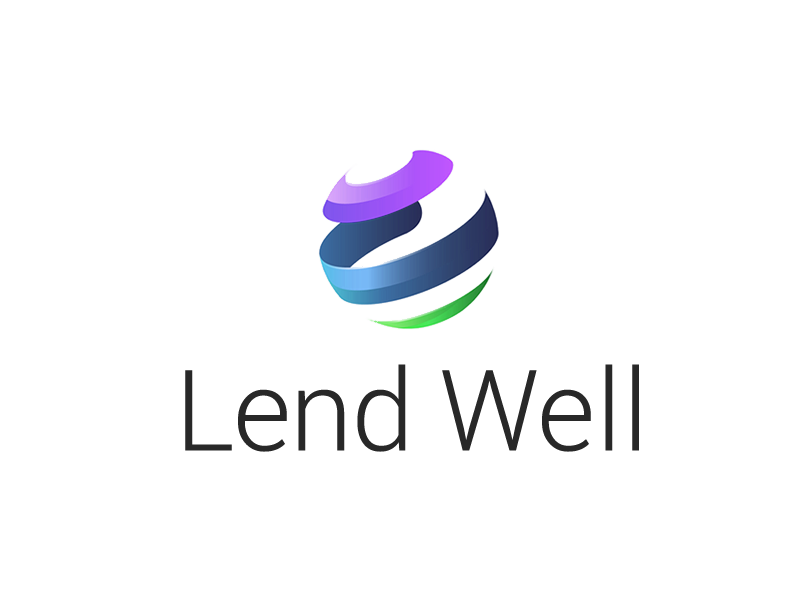
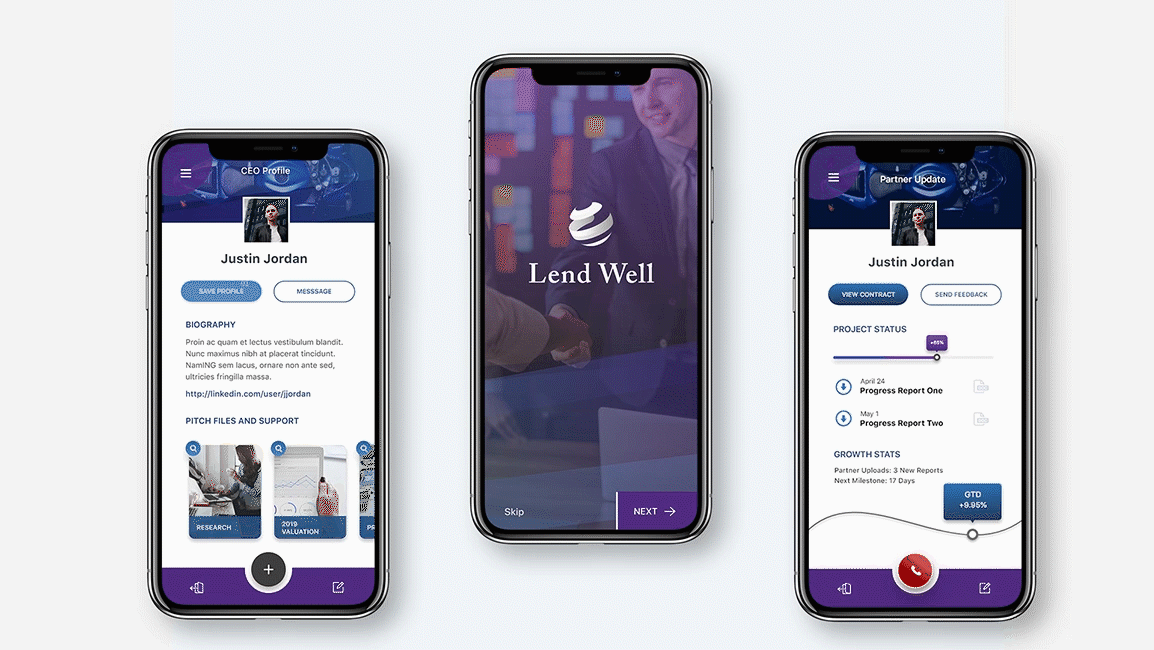
Introducing the Secure Partnership App for Entrepreneurial Visionaries and Small Investors
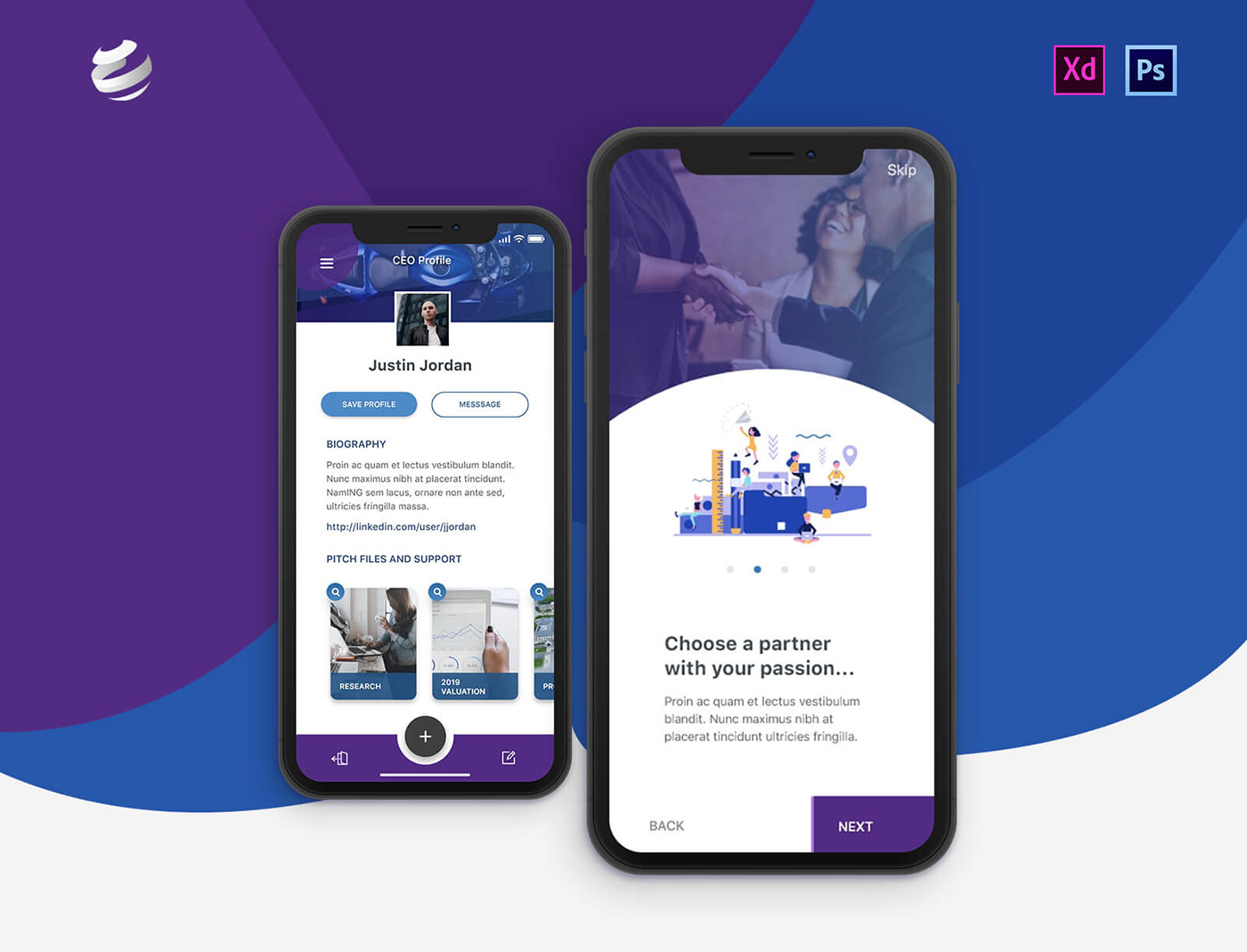
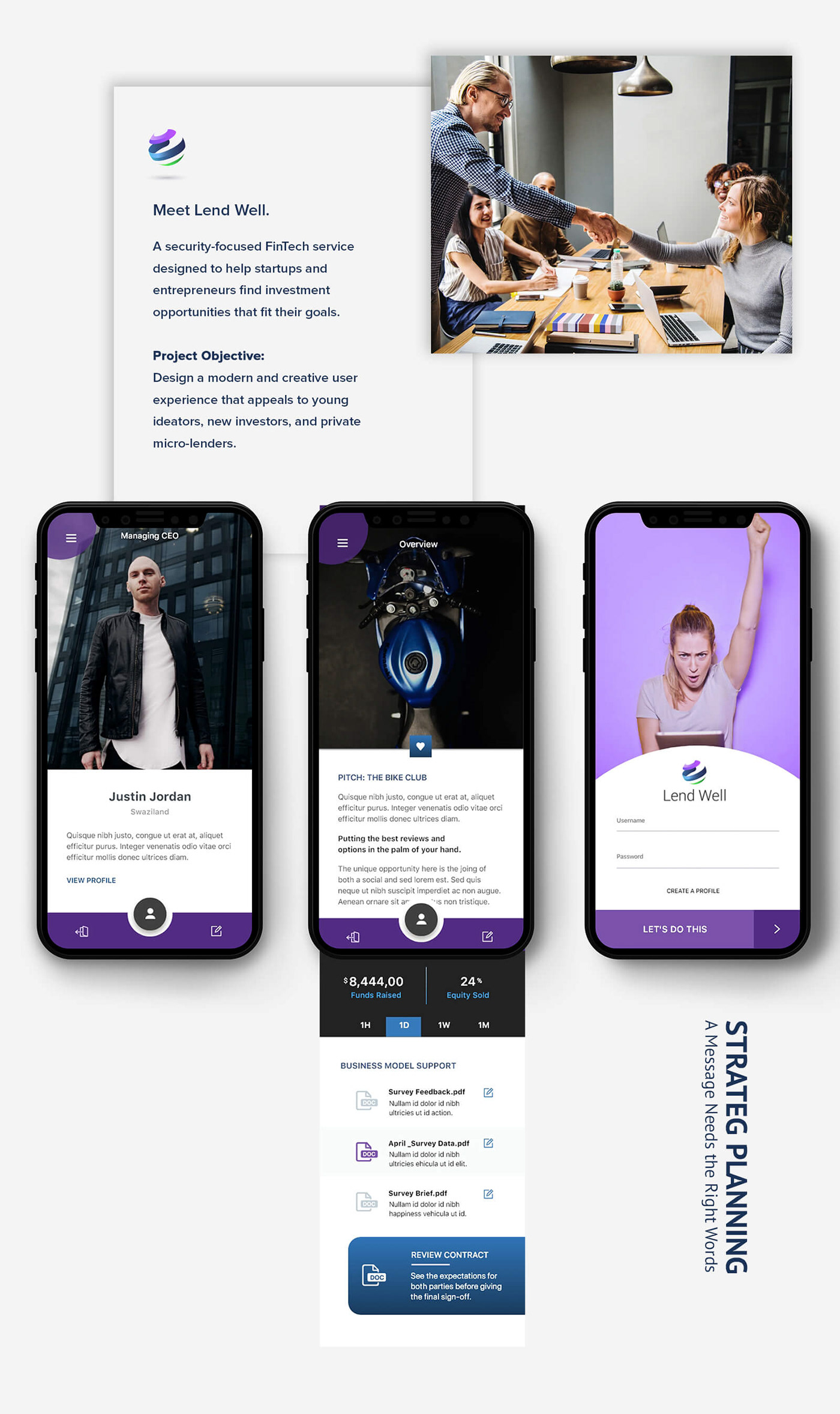
UX Project Brief:
Lend Well is a FinTech mobile app with pre-qualification and background check protocols built into the onboarding process to give users a sense of security and make sure the members who join the community have positive intentions and reliable capabilities.
Lend Well is like having the show Shark Tank in the digital world, designed for smaller players of the game. Its use-target is startups and potential investors for seed-stage organizations.
The purpose of the Lend Well app is to increase the number of inventors and trailblazers who have the resources they need to create the products they have envisioned. The app also satisfies the needs of new or would-be investors who want to "do something big" with a new product but may not have the connections to source partnerships.
The following outlines to User Experience Strategies and Methods I used, in conjunction with client specifications, to create a streamlined user experience for this new, digital partnership tool.
Design Requirements:
1. Design a mobile app that works for both Android and iOS whose design style leans more toward the framework and patterns of iOS human interface guidelines.
2. Present the product brand as a reliable source so we can instill confidence in potential users about the trustworthiness, security, and use-cases of our digital product.
3. Demonstrate the value and potential for life-changing to both of the app's potential users (pitchers or investors).
Messaging Objective:
Quickly convince the User that they can trust (or at least have no need to distrust) the Lend Well app so they will continue reading and learn how it works. Content will encourage them to either "Find Your Place" in the Lend Well community by signing up, or keep the app in mind for help in funding their future ventures
Stage One:
Creating a Project Plan
Every memorable, powerful endeavor begins with a deliberate, direct plan that gives it a strong foundation.
The plan is put into writing that can be shared and easily understood organization-wide and then distributed to clients/stakeholders for review, modification, and approval.
To make this mobile app the obvious best choice, we based every design decision on verified user needs and remained realistic about the security and functionality of its features.
Starting from the Bottom
An approved project plan or creative brief provides the parameters within which reactivity can flourish and intuitive design can be made. The document becomes the compass for every brainstorming session, design decision, and development inclusion.
It will also help use define marketing goals and set brand guidelines. The plan is clear, concise, and informs every contributor and stakeholder of what to expect from this UX design journey.
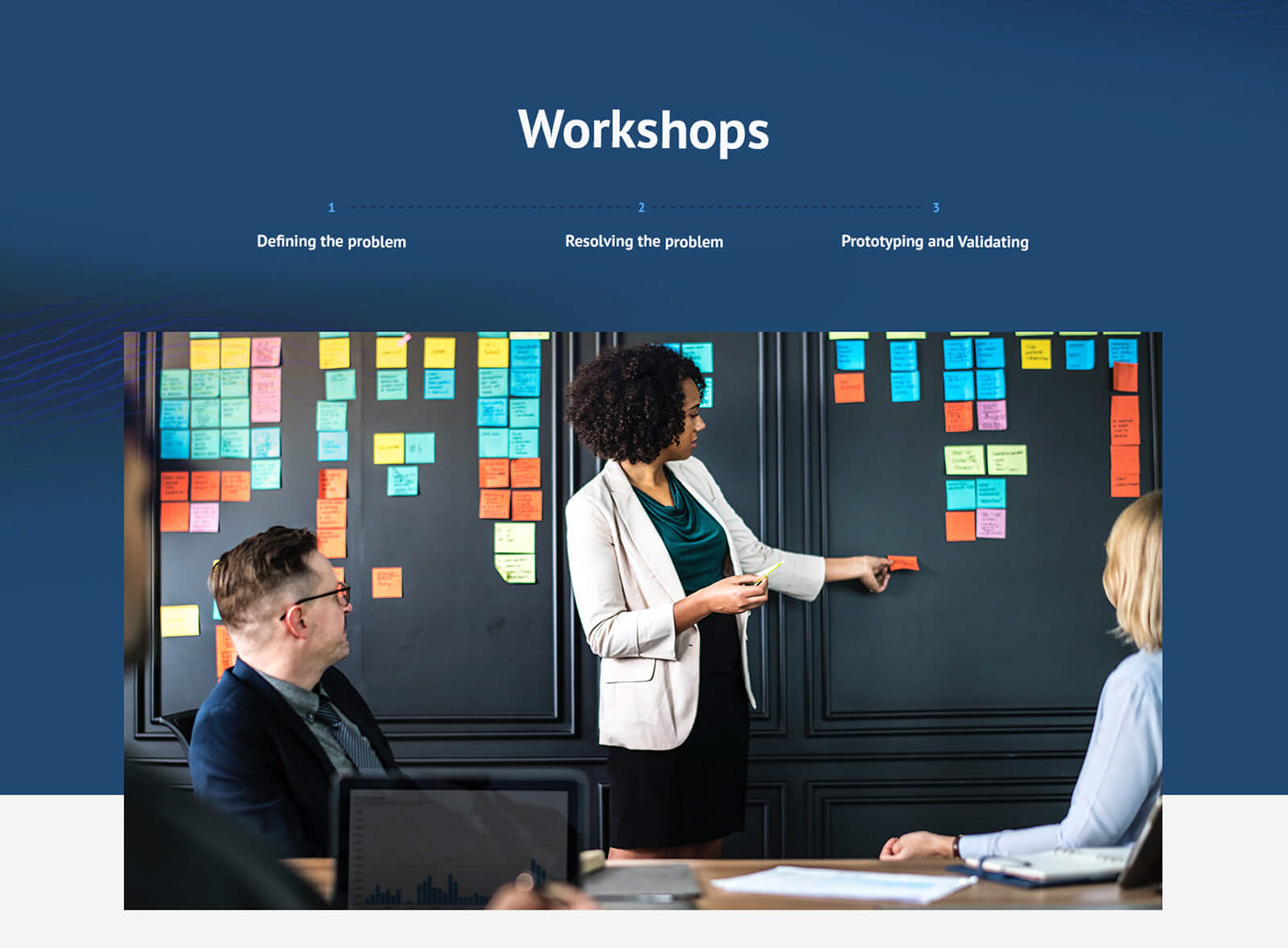
Stage Two: Discovery via Research
Research is what makes an effective UX Design the value-increasing process that it is.
During the research stage, there are three objectives:
1. Clearly define and understand the problem we are tackling for users and how our resolution makes their lives better
2. Outline multiple solutions for resolving the issues and assign product feature enhancements to each viable opportunity that makes sense for the brand, and
3. Test the logic and reality of the product design and make improvements where necessary to add value and increase the potential for success.
Research methods vary based on the needs of individual products and can range from some as simple as online research to a more involved live focus group. Incorporating multiple data sources into a UX project delivers results that have more validation and, for the Lend Well app, getting straight to the opinions of the target user was the best place to set sail.
Crafting the Solution
Though the app's target market is very specific in nature, the range of personalities and mindsets in the startup and entrepreneur industry is vast. For this project, casting a wide net and searching for patterns within the data was the best way to find common ground for in setting parameters and choosing our methods for satisfying user needs.
Online research, surveys, live user interviews, industry publications, forum participation, and an in-depth look at the journey of a venture capitalist seeking investment opportunities provided the best insight and ideas for feature enhancements.
Compiling the data to create user profiles delivered an honest assessment of what users want, and storyboarding a day in the life of each user type (as it relates to Lend Well service offerings) helped communicate the emotional experience users encounter during the partnering process which made identifying the most important features an intuitive process.
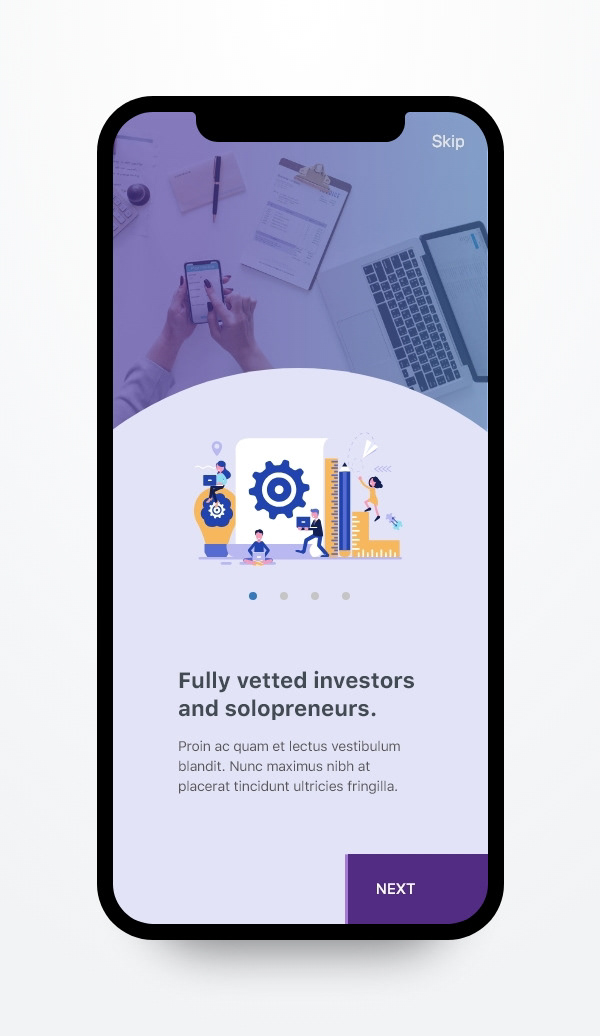
Stage Three: Product Functionality Plan
User feedback and competitive analysis are great ways of identifying gaps in a product's service features. By filling those gaps, the product immediately becomes a viable competitor, even against brands who have occupied the space for quite some time.
Creating a product design that stems from the user's perspective can make design decision easier and the reasoning behind those decisions crystal clear.
Designing from a user-centered frame of mind lets us create more profitable products that do a better job of fulfilling user needs.
Making users happy and products perform better is the goal of every UX Design project.
Here are a few of the opportunities for feature enhancements that emerged from the research stage:
1. To delight users, included: video chat functionality, full editing rights in their profile section, and the ability to pitch multiple wining ideas.
2. During onboarding the viewer is "comforted by" with important information such as metric data, growth projections, a description of security measures, and stats on current Lend Well partnerships, including existing user feedback.
3. With security already addressed, communicating these product value elements helps further confidence growth and lays the groundwork needed for the viewer to begin imagining him or herself moving forward with the decision to download the app.
Reinforcing Our Solution
These messaging elements are introduced and reiterated early-on in the app introduction stage and serve as confidence-building elements that allow us to move beyond the first "walls" user may have up that would typically hinder the buy, allowing them the space they need to, without bias, get educated about the value the app provides as the information and content shift to communication of the app's benefits, use, and problem-solving capabilities.
With their worries eased, it also becomes easier to make sure the viewer knows how to use the app in the way that provides them with the benefits they are looking for and convince them that they have more to gain than lose by giving the app a try.
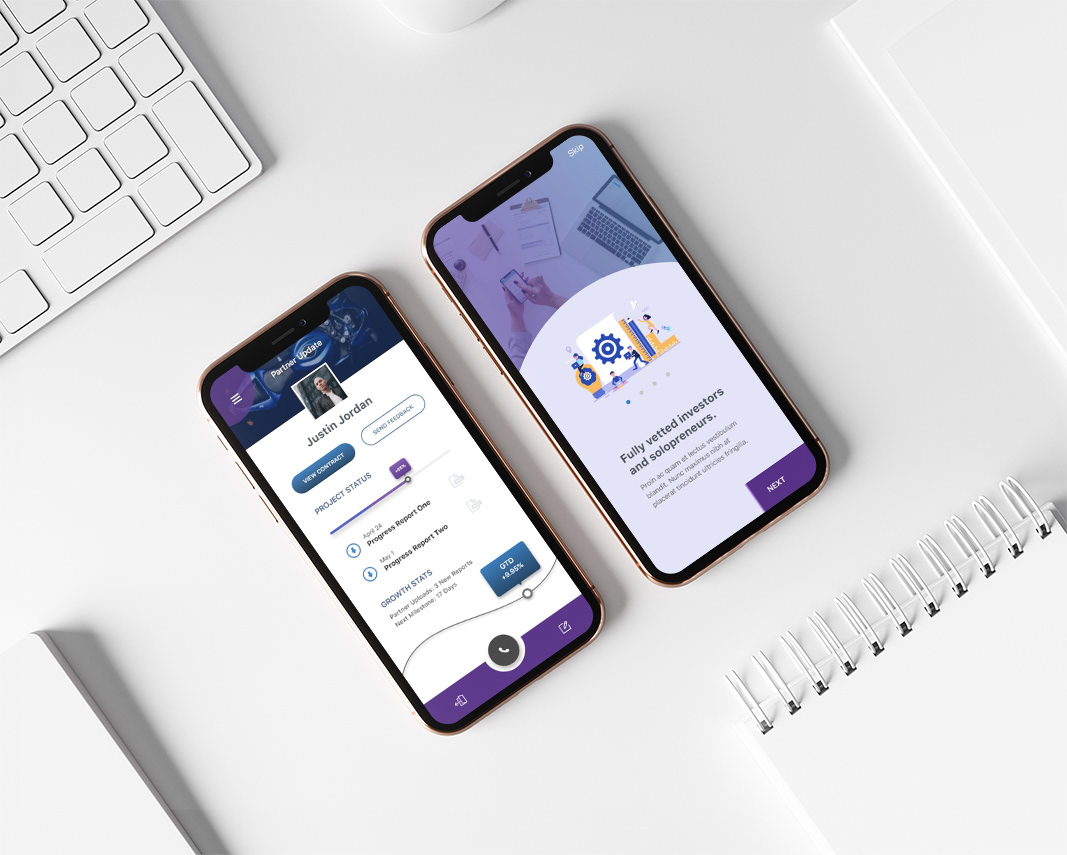
Stage Four: Analysis and Structural Decisions
One of the things that makes UX Research so profitable is the ability to resolve and address issues before they even arise.
As an anal-retentive perfectionist, those words are like angels humming in my ears.
With Lend Well, there were so many potential drop-off points that, for a while, playing devil's advocate user was the only way to find and eliminate product shortcomings.
Another opportunity for finding valuable data through competitive research. There are a few competing apps on the market (similar to but not exactly the same as Lend Well), user feedback and digital product reviews were accessed to identify service gaps within competing apps and discover opportunities for Lend Well to be the hero in this category.

Stage Five: UX Content & Strategy
In an effort to continually reinforce the objective of showing that Lend Well is an excellent solution to their investor needs, it was important to include small reminders regarding the safety of their privacy throughout the app experience.
Whether through text or visual design, this approach let us continually build confidence within the user regarding the safety of our technology so they know that Lend Well is a secure opportunity they do not have to worry about.
Once the path was clear, the final phase of this deeply user-focused design process (as opposed to the development-focused phases such as testing and improved iterations), was to make sure that the user was either delighted, educated, or entertained with every click.





Stage Six:
Mapping the Experience
Prior to development, testing with low-fidelity wireframes provides a realistic and informative click-through test experience.
This first round of usability testing is the best way to take a step back, just before development, and take a look at what we have designed.
Looking at things from the in-use perspective gives us a chance to make sure there is no need left unresolved.
Next-level Design Thinking - Understanding Human Psychology Can Help Seal the Deal...
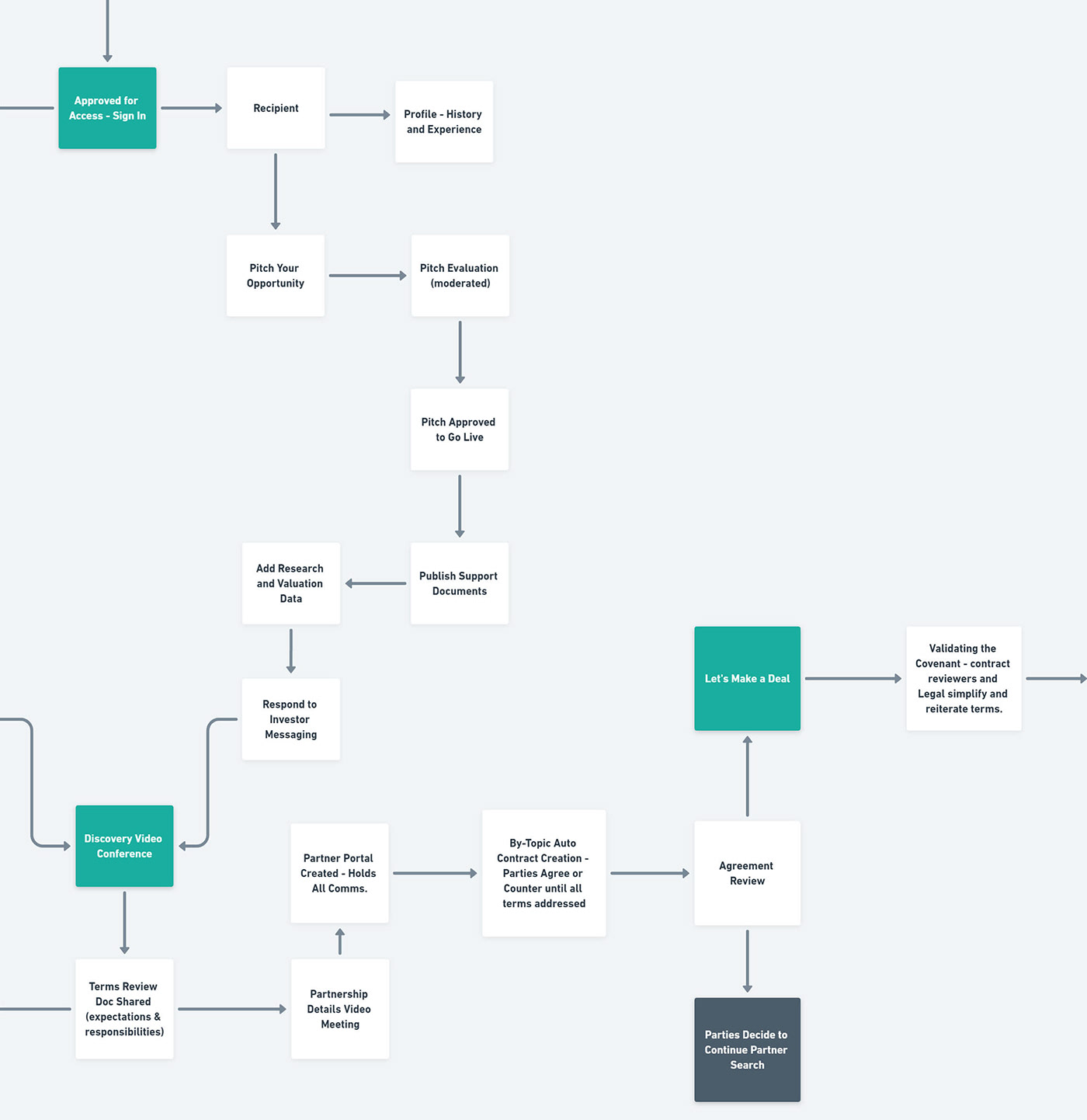
The UX design process produced an intuitive experience that can be reviewed and evaluated using the information architecture or user flow map.
Following the map, we can also track every instance where we touched on our primary objective - to inform users of the high-level security protocols built into the app. The objective was fulfilled in multiple ways: by incorporating the idea of security through visual design elements, as written messaging in content text, and in more subtle ways through product features such as privacy and escrow measures that are a part of the app's infrastructure and advanced background checks that validate users before they are given access to the community.
The Outcome of Deliberate Product Design:
Addressing the user's primary concern - security - upfront gave us the edge we needed to create confidence for users to move forward freely. Removing that concern opens the door for visitors to make the download decision.
Applying the UX Design process allowed me to be thorough and purpose-driven when finalizing the flow of information and planning the structure of the Lend Well app experience. The forethought and user insights gained through the process made it easier to succeed at engineering a supportive, cohesive environment for building strong partnerships that fulfills the directives of both business objectives and user needs.
Thank you.
If you are new to UX and need some advice on guidance on a project, feel free to message me any time. Good luck, and happy building!








